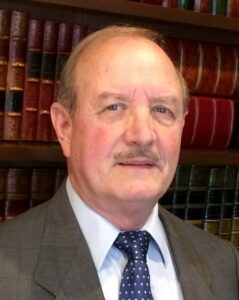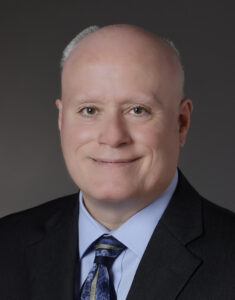Back in the 1980s when I began to get active in Italian American affairs, I wrote a letter to Newsday, the regional newspaper of Long Island, critiquing an op-ed on Italian history. A few days later my letter was published. Shortly after, I received a phone call from activist John LaCorte of Brooklyn praising my effort.
In 1964, LaCorte famously lobbied for a new bridge connecting Brooklyn to Staten Island. He had to buck master builder Robert Moses and Governors Harriman and Rockefeller to have it named after explorer Giovanni da Verrazzano. Before that, he lobbied the FBI to install a statue to FBI founder Charles Bonaparte at their building’s entrance. In between he brought attention to Antonio Meucci’s primacy over Alexander Bell in the invention of the telephone. LaCorte’s call to me was like hearing from the Pope, that’s how I revered the elders of our community. He was part of a generation which counted Schiavo, Musmanno, Gambino, Sammartino, and others who had the intellectual credentials that gave us the tools and organizations to educate ourselves, to prepare us to advance our cultural legacy.

For my part, I asked LaCorte for an interview on his accomplishments for the community. That interview was the focus story of our first issue of The Italic Way magazine in 1988, with LaCorte on the cover (right). You can find it in our Research Library at www.italic.org. LaCorte’s story will impress you.
These days, something is happening with the youth of our ‘community.’ A few years ago, I was approached by Italian American law students at Touro College on Long Island. Seems they needed to be reassured that Christopher Columbus was really Italian, not Jewish as a professor at their Jewish-run college had been telling them. Without hesitation I arranged a visit to Touro and gave a presentation to the “Italian Club” on the facts. I even distributed free copies of The Italic Way. In the hopes of bringing these 20-somethings into the fold, I also offered to sponsor a monthly wine & cheese gathering on campus of the Club with our Institute leaders that would deepen their understanding of heritage. However, these future lawyers were Italian in name only. Their message to me was ‘thank you and goodbye.’ The “Club” was just a club, a social oasis in a Jewish college, nothing more.
This experience led me to unfavorably compare the Touro students with an Italian club at Columbia University in the 1920s. That Circolo Italiano, a group of undergraduates, envisioned an Italian Cultural Center at Columbia and managed to have one built in 1927 – a 30,000 s.f. edifice that still stands today. Those students were the sons and daughters of blue-collar immigrants living modest lives in nearby East Harlem. They not only found a benefactor to donate the building, but they helped operate it for 63 years thereafter. (By the way, there is no Italian American Club at Columbia today and the building no longer houses the Italian Language Dept.)

Clearly, times have changed, and Italian American youth has not improved in commitment to heritage. You will find a link below to a recent ‘conference’ in Florida of 20- and 30-somethings. This is apparently their 3rd year of ‘conferences’ all paid by a rich benefactor. See if you can detect a mission or a plan emanating from this gathering. Their ethnic mentor is Chazz Palminteri! But they don’t want any direction or oversight by any other “boomers.” Somehow, their youth and vigor will find a way to advance the Italian heritage. Their grounding? Besides claiming on camera to be fans of Chazz’s A Bronx Tale and “chicken cutlets,” who can say? -JLM




Speaking of Columbus, Trump’s recent announcement that he was restoring Columbus Day and protecting Columbus statues may be especially significant for the Italian American community. It could have a huge political implication in Eastern states that have a large Italian-American population. I believe many more Italian Americans are pro-Columbus than anti-Columbus and that could have a major impact on the way they will vote in the mid-term elections.
It’s a challenging question, when it comes to heritage. Recently I was interviewed by a college student, for a project regarding our local community and its Italian American connections. I was able to pull out history boards, photos and original source materials that rarely make it out of storage. Even so we were able to chat for a couple of hours, so hopefully it gets into the community dialogue. This is why it is critical to try to maintain and promote this history, less our story will conveniently get loss in telling the country’s saga. US history 101 specifically, intentionally is designed to exclude as much as it tells, so it becomes equally compelling to offer a supplemental saga, our tale.
The challenge is how to keep the momentum going, as well as work necessary to maintain this vital archival prospective. It ain’t easy, to say the least.
John, this is good history and makes one think about having to start anew in each generation as we experience our gains being diminished, not celebrated. i share your mindset about the lack of direction and structure of the future leaders project behind our aspirations and national goals and agenda. The goal of saving the Casa for the Italian community should be added to our national goals. you can do that by joining the national Italian American president’s association, Copomiao. I joined and pursued my goal of a national museum which had been rejected for decades by the other nationals while Copomaio adopted my goal as their national goal and now legislation has been introduced in Congress. that is a new way of doing business and a show of unity unknown before.